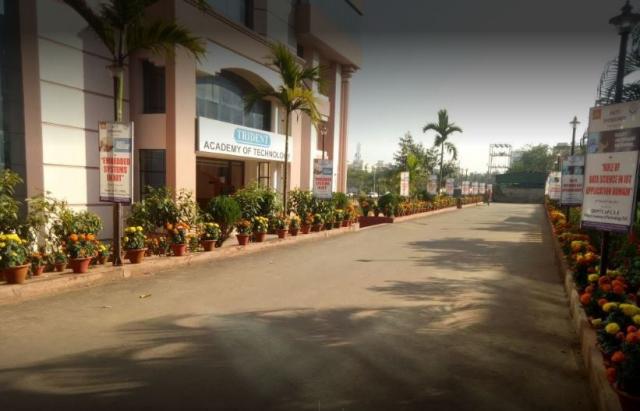Baddi University of Emerging Sciences and Technology (BUEST) has emerged as a leading institution for technical and professional education in North India, with a placement ecosystem that aligns closely with industry needs and student ambitions. Placement outcomes vary across programs, reflecting national employment trends while highlighting the university’s strengths in engineering and emerging technologies. The BUEST placement cell follows a structured approach, organising pre-placement talks, skill-building workshops, and recruiter interactions to ensure students are well-prepared. While technical streams continue to drive the majority of campus hiring, multidisciplinary opportunities are steadily growing, providing students with diverse career pathways.
Table of Contents
BUEST Placement Overview
| Branch/Course | Avg Package (LPA) | Highest Package (LPA) | % Placed / No. Placed | College Avg Placement (LPA) | Additional Info | Student Review on Placement Data |
| B.Tech CSE | 4 LPA | 6.5 LPA | 70-80% | 4.5 | Top recruiters: TCS, Infosys, Wipro | CSE students get better IT company opportunities compared to other branches |
| B.Tech Electrical | 2 LPA - 3 LPA | 4 LPA | 60-70% | 4.5 | Core companies like Mahindra visit campus | Limited core companies but decent packages for top performers |
| B.Tech Civil | 2 LPA | 3.5 LPA | 50-60% | 4.5 | Infrastructure companies participate in placements | Fewer recruiters compared to CSE/Mechanical |
| B.Tech ECE | 3.5-4.5 | 7-8 | 65-75% | 4.5 | Electronics firms like Havells recruit | Good mix of IT and core electronics roles |
| B.Pharma | 2.5 LPA | 3 LPA | 50-60% | 3.2 | Pharma companies like Sun Pharma visit | Average placements with regional companies dominating |
| MBA | 3 LPA - 4 LPA | 6 LPA | 60-65% | 3.8 | Focus on retail and SME sector roles | Placements depend heavily on individual performance |
| B.Sc (Nursing) | 3.24 LPA | 24 LPA | 40-50% | 2.8 | High corporate participation | Most students pursue higher studies instead |
| BBA | 2.2-3 | 2.5 LPA | 45-55% | 2.5 | Local CA firms and banks recruit | Placements need improvement for commerce stream |
Engineering Dominance
- Computer Science Engineering (CSE): With 70–80% placements, CSE continues to lead, supported by recruiters like TCS, Infosys, and Wipro. The average package is INR 4 LPA, while the highest reaches INR 6.5 LPA. Students report better IT opportunities compared to other branches.
- Mechanical Engineering: Dual outcomes persist—core companies offer INR 8–9 LPA for specialized roles, while many graduates move to IT or analytics.
- Electronics & Communication (ECE): Placement rates of 65–75% reflect demand in IoT and embedded systems. Average packages stand at INR 3.5–4.5 LPA with top offers up to INR 7–8 LPA from firms like Havells. Students highlight a balanced mix of IT and electronics roles.
- Electrical Engineering: Records 60–70% placements, with an INR 2–3 LPA average and an INR 4 LPA highest. Companies like Mahindra recruit, though opportunities are fewer than at CSE.
- Civil Engineering: With 50–60% placement, average salaries hover around INR 2 LPA, with an INR 3.5 LPA peak. Infrastructure companies participate, but student reviews note fewer recruiters compared to other branches.
Emerging Sectors
- Pharmacy (B.Pharm): Average packages are INR 2.5–3 LPA, with an INR 3 LPA highest, mainly from regional firms like Sun Pharma. Around 50–60% students are placed, though opportunities are concentrated in Himachal and Punjab.
- Management (MBA): Reflecting India’s SME-driven economy, MBA graduates secure INR 3–4 LPA average packages, with INR 6 LPA highs in retail and operations. Placement rates hover at 60–65%, but reviews stress that outcomes depend heavily on individual performance.
- Nursing (B.Sc): While corporate roles touch an impressive INR 24 LPA peak, the average is INR 3.24 LPA with only 40–50% placed. Many students pursue higher studies instead.
- BBA & B.Com: With 45–55% placement rates, BBA graduates earn INR 2.2–3 LPA averages, mostly from local CA firms and banks. Students rate placements as modest, needing stronger recruiter diversity.
BUEST Strategic Initiatives
BUEST’s placement strategy includes three key components:
- Industry-Aligned Curriculum: Regular updates to course content based on recruiter feedback
- Skill Certification Programs: Partnerships with platforms like Coursera and NPTEL for niche technical skills
- Startup Incubation: Encouraging entrepreneurial ventures through campus resources and mentorship
BUEST Recruiters
While TCS, Infosys, and Wipro anchor mass recruitment, domain-specific companies like Havells (electronics) and Sun Pharma (pharmaceuticals) provide targeted opportunities. Infrastructure firms participate in civil engineering placements, though at lower frequencies compared to IT/electronics sectors.
BUEST Student Preparedness
The university mandates:
- Six-month industry internships for engineering students
- Mock GD/PI sessions with alumni panellists
- Technical hackathons sponsored by corporate partners
BUEST Challenges and Opportunities
- Core Sector Engagement: Mechanical and civil engineering streams need stronger partnerships with automotive and infrastructure giants
- Commerce & Science Expansion: Developing corporate networks for B.Com and B.Sc students remains a priority
- Geographic Reach: Attracting recruiters from South Indian tech hubs could diversify opportunities
BUEST’s placement ecosystem demonstrates a clear correlation between industry trends and academic offerings. While engineering disciplines maintain robust placement metrics, the university is gradually strengthening support for non-technical streams through campus drives and skill development programs. As India’s job market evolves toward AI, renewable energy, and advanced manufacturing, BUEST’s focus on emerging technologies positions its graduates to capitalize on next-generation opportunities.







